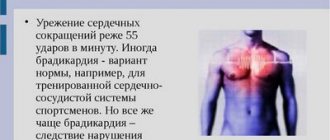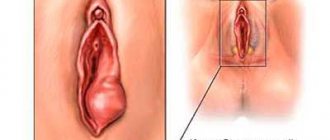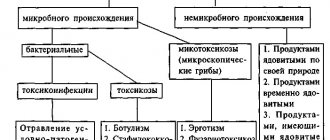Viral hepatitis
Which doctors should I contact?
Any viral hepatitis is an infectious disease and is treated primarily by infectious disease doctors.
In addition, there are other specialists in liver diseases (gastroenterologists and hepatologists) who also take an active part in the treatment of patients suffering from viral hepatitis. Treatment of viral hepatitis
For mild acute hepatitis, treatment can be carried out on an outpatient basis; moderate and severe forms are treated in a hospital. In case of chronic pathology (beyond a significant exacerbation), treatment is carried out at home. In cases of severe exacerbation or decompensation, hospitalization in an infectious diseases hospital is indicated.
Basic treatment is prescribed, which includes a gentle regime and a specialized diet - exclude fried, smoked, pickled foods, refractory fats (pork, lamb), alcoholic and carbonated drinks. It is recommended to drink plenty of fluids (up to 2–3 liters per day).
Detoxification measures are used (intravenous administration of hemodez, glucose solution with vitamin C or Essentiale, lactulose is prescribed). If necessary, sorbents, hepatoprotectors, antioxidants, diuretics, probiotics, antihistamines, anti-inflammatory and hormonal agents, and vitamins are recommended.
Alpha interferon has immunomodulating and antiviral effects, inhibits the synthesis of viral proteins, and enhances the activity of natural killer cells in hepatitis B and C.
In the case of a chronic course of the disease, it may be necessary to prescribe drugs with direct antiviral action, leading to the complete disappearance of the hepatitis C virus or persistent suppression of viral replication in hepatitis B and D. The hepatitis B virus is able to integrate into human genetic material, and therefore completely recover from this disease fails. Treatment of hepatitis B with delta agent is one of the most difficult tasks in hepatology today.
Complications
Complications of viral hepatitis can include functional and inflammatory diseases of the biliary tract, as well as hepatic coma, which occurs due to massive necrosis of liver cells and leads to death in almost 90% of cases. Hepatitis B and C are dangerous due to the development of a chronic process and are the most common cause of cirrhosis and liver cancer.
The most severe course of the disease is caused by a combination of two or more viruses. In this case, the prognosis is extremely unfavorable. Often the signs of chronic viral hepatitis are mild, which allows a person to ignore the disease for the time being. Often, obvious clinical manifestations of the disease are detected already at the stage of liver cirrhosis.
In addition to the development of cirrhosis and liver cancer, a connection between chronic hepatitis C and B-cell lymphoma has been proven - damage to the endocrine glands, organs of vision, skin, muscles, joints, nervous system, and bile ducts.
Prevention of viral hepatitis
Today, the most effective method of preventing viral hepatitis is vaccination:
- The hepatitis A vaccine is administered twice and provides protection against the disease for up to 20 years. In Russia, vaccination against viral hepatitis A is included in the National Calendar of Preventive Vaccinations for epidemic indications.
- Vaccination against hepatitis B (N532) protects not only against the hepatitis B virus, but also against the delta agent. In Russia, vaccination is carried out within the framework of the National Calendar of Preventive Vaccinations. If no contraindications are identified for the newborn, the first vaccination is given in the maternity hospital, on the first day of life. The second one is done one month later, and the third one 6 months after the start of vaccination.
- There is no specific vaccine against hepatitis C. Several vaccines are in development.
Nonspecific prevention of viral hepatitis includes ensuring food and water safety (hepatitis A and E), careful testing of donor blood, sterile injection equipment and infection control (hepatitis B and C).
Hepatitis prevention measures are simple and accessible:
- Strict adherence to the rules of personal hygiene: washing hands before eating, after visiting the toilet, when returning from work, walking, refusing to use someone else’s manicure tool, toothbrush, razor.
- Avoid contact with the biological fluids of strangers. When treating wounds, use disposable gloves.
- Wash vegetables, berries, fruits, greens under strong pressure of tap water, rinse with boiled water.
- Drink only boiled or bottled water. Do not swim in polluted waters.
- If parenteral hepatitis is detected, it is necessary to examine the sexual partner and follow all prescriptions of the attending physician.
- Avoid contact with used syringes, needles and other medical and non-medical equipment.
Sources:
- ;
- ;
- ;
- ;
- ;
- ;
- ;
IMPORTANT!
The information in this section cannot be used for self-diagnosis and self-treatment. In case of pain or other exacerbation of the disease, diagnostic tests should be prescribed only by the attending physician. To make a diagnosis and properly prescribe treatment, you should contact your doctor.
Ate and got infected
In principle, all hepatitis can be divided into two groups depending on the method of infection. Hepatitis A and E are contracted orally: through the mouth. The patient releases viruses, and they reach the person with contaminated food, water or hands. Both infections are acute, with jaundice, although not always. Hepatitis A has long been known and well studied, but with hepatitis E everything is more complicated. It is known that it is transmitted through pork (there is evidence that the virus can multiply in the body of piglets) and many other contaminated products. But the infection itself has not been studied enough, its prevalence in Russia is poorly known, and testing methods for hepatitis E are not routine: a study that determines whether the causative agent of this form of hepatitis caused the infection is practically not prescribed. And this means that such a disease can often be mistaken for hepatitis A. But hepatitis E is much more dangerous. If it develops in a person who already has chronic liver disease, the infection can be very severe and even have systemic effects: damage to the joints and nervous system. This is a dangerous current. Women in the second half of pregnancy are also at risk; a third of them have very severe lesions with liver failure. In addition, there are suspicions that hepatitis E, unlike A, can become chronic, and in some cases can lead to cirrhosis of the liver.
Hepatitis E must be taken seriously, especially since our country has a priority in the discovery of this disease. For a long time it was mistaken for hepatitis A, and in the eighties, Soviet scientist Mikhail Balayan proved that it was a separate infection. He was the first to isolate the virus that causes it. To do this, he had to undergo self-infection, and then he isolated the virus from himself. This discovery is recognized throughout the world.
Take care of your liver. Myths and truth about the insidious disease Read more
Hepatitis B: features and distinctive aspects
Hepatitis B can be acute, but a small number of people develop the chronic form. Infection with viral hepatitis B occurs through the entry of the virus through damaged skin and mucous membranes, and the infection is transmitted through biological fluids.
The following can cause infection:
- blood transfusion;
- use of contaminated instruments (tattoos, piercings, manicures);
- injection drug use;
- transmission of the virus from mother to child;
- sharing personal hygiene products;
- unprotected sexual intercourse.
The period between infection and the onset of symptoms for viral hepatitis B is from 30 to 180 days.
Hepatitis B is asymptomatic in most cases. Some patients have a clinical picture similar to hepatitis A:
- headache;
- emotional imbalance;
- severe weakness,
- fast fatiguability;
- loss of appetite, nausea;
- bitterness, feeling of heaviness and pain in the right hypochondrium;
- pain in joints and muscles;
- febrile temperature,
- skin itching, pigmentation.
Hepatitis A: etiology and modes of transmission
Hepatitis A is an acute infection that is transmitted by the fecal-oral route (the virus enters the human body through the mouth with water contaminated with feces, food and contaminated hands). Children are more often infected.
The period between infection and the appearance of symptoms of the disease with viral hepatitis A is 25-30 days.
Hepatitis A is characterized by a wide variety of clinical manifestations, from asymptomatic forms to forms with severe symptoms of intoxication and profound metabolic disorders. Signs of hepatitis A:
- increase in body temperature to 38 degrees and above;
- headache;
- severe fatigue, nausea, vomiting
- feeling of heaviness and pain in the right hypochondrium;
- jaundice (skin and eyes turn yellow, urine darkens, feces become discolored).
In children under six years of age, the disease usually occurs with minimally severe symptoms. However, only 15% of infected people develop jaundice. In older children and adults, symptoms are usually more severe. Jaundice is observed in 70% of clinical cases.
Clinical cases
Patient S., born in 1953 complained of nausea, vomiting, severe bloating, and yellowing of the sclera. The deterioration in general condition began a week ago. From the anamnesis it is known that in 2016 a cholecystectomy was performed for multiple stones in the gallbladder. During an objective examination, the liver protrudes from under the edge of the costal arch by 3 cm. Additional examination was carried out (total bilirubin - 75.77 µmol / l, direct bilirubin - 56.68 µmol / l, ALT - 2197.8 U / l, AST - 603 U/l, GGT - 224.2 U/l, LF - 127.8 U/l, ultrasound OBP (enlarged liver, cyst of the left lobe of the liver, gallbladder removed, flatulence)). An ELISA test for viral hepatitis was prescribed. Antibodies to HAV of the IgM class were detected.
Diagnosis: Acute viral hepatitis A.
Patient D., born in 1982 complained of heaviness in the right hypochondrium over the past 3 months. During an objective examination, the liver protrudes from under the edge of the costal arch by 2 cm. Additional examination was carried out (total bilirubin - 62.35 µmol/l, direct bilirubin - 37.26 µmol/l, ALT - 331.32 U/l, AST - 191 .77 U/l, GGT - 277.35 U/l, LF - 115.2 U/l, ultrasound of OB (increase in liver size, diffuse changes in the liver such as steatosis, cholesterosis and hyperechoic sludge in the gallbladder). test for viral hepatitis, positive HBs Ag (viral hepatitis B) was detected. Additionally, an ELISA study was carried out for HBe Ag, antiHBe, HBcor Ag IgM, G and to detect hepatitis B and D virus in the blood. PCR HBV DNA - detected, PCR HDV RNA - not detected.
Diagnosis: Chronic hepatitis B, period of biochemical activity.
If you suspect you have hepatitis, contact a specialized specialist. He will help you correctly determine the diagnosis and prescribe adequate treatment.
What is the liver?
The liver is the largest organ
in the body, weighing about 1.3 kg. It consists of four lobes of different sizes and shapes and is located in the abdominal cavity on the right below the diaphragm. The human liver has many functions: - Detoxification - filtering harmful substances from the blood, such as alcohol. — Accumulation and preservation of nutrients. For example, vitamins A, D, and B12. - Synthesis of amino acids - the “building blocks” of proteins. - Production of digestive enzymes - bile. — Maintaining optimal blood sugar levels. -Produces 80 percent of the body's cholesterol. — Glycogen storage and conversion of glucose into glycogen. - Production of hormones.
Hepatitis A: complications
In some patients, hepatitis A may recur. Thus, after the recovery period, an exacerbation may occur. After a relapse, the infectious disease ends in complete recovery.
Complicated forms of hepatitis A are considered cholestatic (cholestasis - literally “stagnation of bile”) and fulminant (fulminant). In the cholestatic form, severe jaundice, significant enlargement of the liver and severe skin itching are observed. Stagnation of bile is accompanied by significant inflammation of the walls of the bile ducts and the liver as a whole. Despite the severe course, the prognosis is mostly favorable.
With the fulminant (fulminant) form of the disease, the prognosis is usually negative. Fortunately, this form is extremely rare and only occurs in older people. Fulminant hepatitis is deadly. Death occurs within a few days from acute liver failure.











